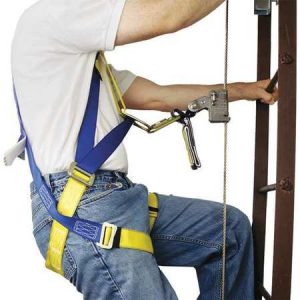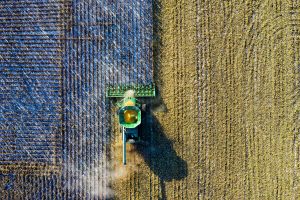
Though ladders don’t seem like the most dangerous tools in the industrial field, KC Supply has repeatedly emphasized is the importance of safety when working in heights. Even when personnel climb ladders, safety precautions should remain in place.
The Numbers
The CDC has reported that 20% of workers across all industries have had accidents or falls on ladders. It’s exceptionally high among construction workers. Overall, 81% of falls in emergency rooms come from ladders. Any business with workers on ladders needs to remain vigilant on ladders safety based on these numbers alone.
OSHA Requirements and ANSI Regulations
Some of the crucial requirements and regulations for ladders of all types include:
General Rungs and Steps Requirements:
- Ladder rungs and steps should not be spaced less than 10 inches and not more than 14 inches apart.
- Fixed rungs and steps on telecommunication towers must be spaced not more than 18 inches apart.
- There must be a minimum clear width of 11.5 inches on portable ladders and 16 inches for fixed ladders.
General Ladder Requirements:
- Wooden ladders must not be coated with materials that obscure structural defects.
- Metal ladders must be made with corrosion-resistant material.
- All ladder surfaces must be free of puncture and laceration hazards.
- Workers must only use ladders for the purpose for which they were designed.
Fixed Ladders:
- Ladders must support the maximum intended load.
- Grab bars should not protrude on the climbing side beyond the ladder’s rungs.
- Grab bars must extend 42 inches above the access level or landing platforms.
- Ladders that have a pitch greater than 90-degrees should not be used.
Portable Ladders:
- All rungs and steps must be corrugated, knurled, dimpled, coated with skid-resistant material, or any other method to minimize slippage risks.
- Workers should never load ladders beyond the maximum intended load.
- Workers must use no single-rail ladders.
- Stepladders’ top step and caps should not be used nor function as steps.
- Ladders should not be placed on boxes, barrels, or other unstable bases.
The full list is extensive. But KC Supply believes that a vast majority of them are crucial to preventing accidents and falls on ladders and are worth knowing.
It’s not enough to simply have safety equipment. You also have to be well-informed on the regulations. To find more critical safety precautions and important OSHA guidelines, visit KCSupply.com.




 Heat-related illness and incidents are a prime concern in many industrial and agricultural industries, especially during the summer months. Over time, the summer season has become hotter and hotter. With that comes the substantial risk of heat-related incidents, especially for workers who do many tasks outdoors or labor indoors in enclosed, unventilated spaces.
Heat-related illness and incidents are a prime concern in many industrial and agricultural industries, especially during the summer months. Over time, the summer season has become hotter and hotter. With that comes the substantial risk of heat-related incidents, especially for workers who do many tasks outdoors or labor indoors in enclosed, unventilated spaces.